Tiny GPS trackers show rare bird's epic journey
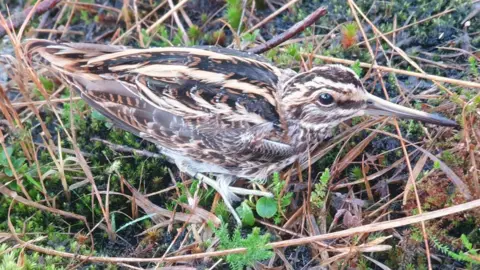 Other
OtherA rare bird that was fitted with a tracker a year ago has flown back to its winter home of Staffordshire, revealing an epic journey across Europe. The BBC met the team behind the fascinating project.
The jack snipe is a small and secretive bird and I'm squelching through the site of a former South Staffordshire colliery trying to spot one.
Despite the fact there could be as many as 45 in this football pitch-sized patch of soggy ground they are almost impossible to spot.
This isn't just because of their small size and excellent camouflage - it's also down to behaviour.
Jack snipe don't tend to fly away when you get close to them, instead they hunker down and stay still. You can be right on top of one and never know.
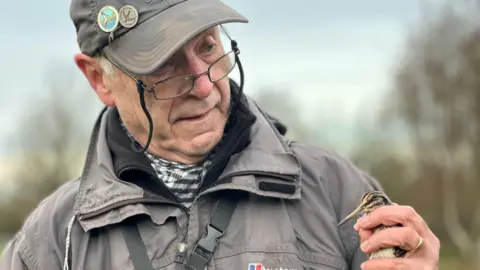
This is why we know so little about this winter visitor to the UK.
But all of this is starting to change thanks to dedicated bird enthusiasts using the very latest technology.
'Absolute gamechanger'
Colin McShane from the Belvide Ringers group explained to me how thermal imaging cameras have revolutionised their work.
"It's an absolute gamechanger, as soon as we started (with these cameras) we found jack snipe relatively easily," he said.
What's impossible to see with the naked eye shows up as a bright white spot with a camera that can see the heat given off by a bird.
Borrowing Colin's thermal camera I discovered I was within a few feet of a pair of jack snipe that were otherwise impossible to spot.
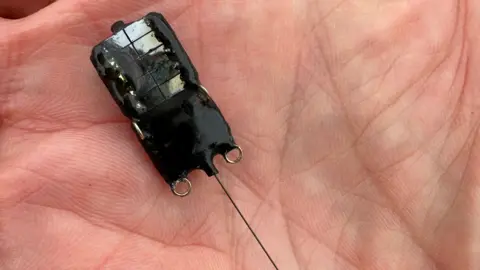
Once you can see the birds it becomes much easier to catch them and ring them.
Ringing is the traditional way to learn about the migratory patterns of birds but, once again, technology is changing all this.
For the first time, this Staffordshire group has been able to use tiny trackers on the jack snipe to see exactly where they go.
And it's only recently the technology has shrunk to the point you can make a tracker for such a tiny bird.
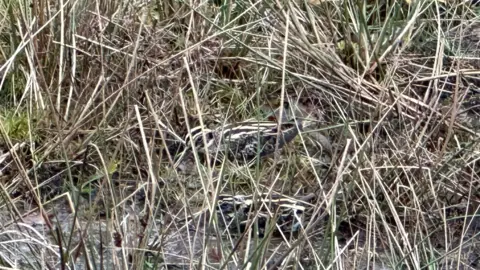
Just before Christmas the team managed to recapture one of the birds with a tracker and were able to download the data, revealing the extraordinary journey these birds undertake.
The jack snipe spent February to April in Staffordshire, then flew overnight to Essex.
The the next day it reached Germany and the next day Poland.
That's 1,000 kilometres in three days. After resting it headed further east to Latvia.
"But at that point the battery in the tracker failed" explained another ringer, Sophie Rabone.
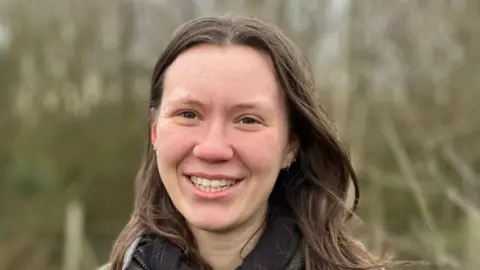
It's thought the birds carried on further into eastern Europe and then on to Russia to breed.
With 10 birds fitted with trackers there are still more chances to learn more - the team just need to catch those birds.
Meanwhile for Natural England who supported the project one of the most exciting things is what the trackers reveal about the behaviour of the birds when they are living in this country.
While the snipe roost in this squelchy patch of land, they fly off to feed at night elsewhere.
Now we know where they go, Kevin Clements from Natural England said they can "do surveys to find out what they like about these areas".
And in turn, they can work with local farmers to improve habitat for these mysterious birds.
Now the search is on to recapture the birds with the remaining trackers so we can reveal more snipe secrets.
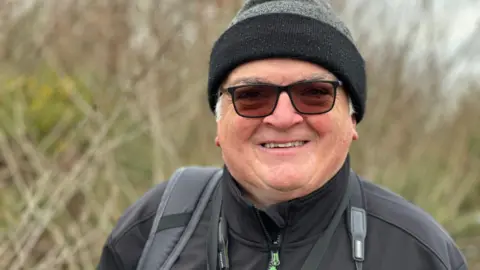
Follow BBC Stoke & Staffordshire on BBC Sounds, Facebook, X and Instagram.
